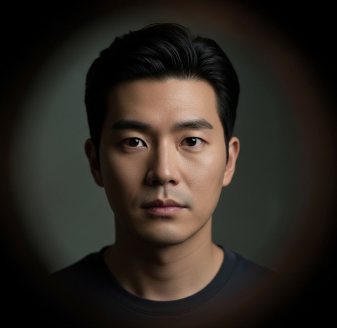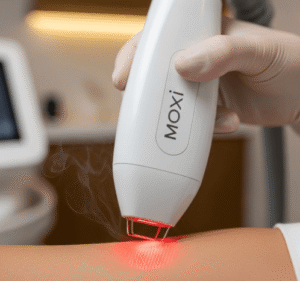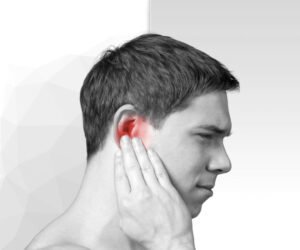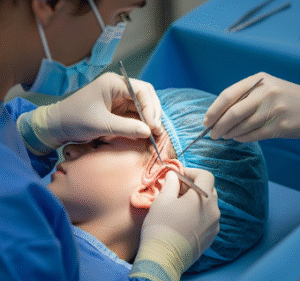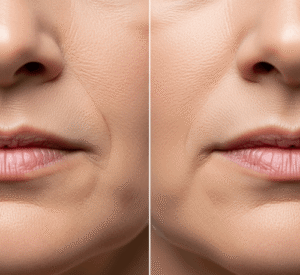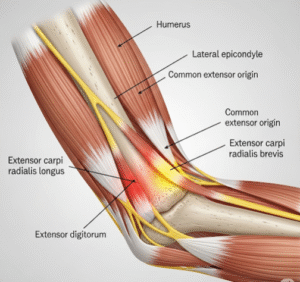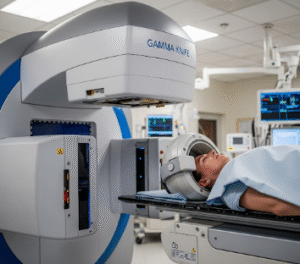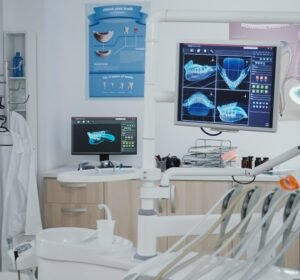➤ Overview
Tunnel vision, medically known as peripheral vision loss, is a condition where a person loses the ability to see objects outside their central field of vision, creating a sensation as if looking through a narrow tunnel. This condition can range from mild reduction in side vision to complete peripheral blindness, significantly impacting daily activities such as driving, walking, and navigating environments.
In South Korea, tunnel vision is evaluated by ophthalmologists and neuro-ophthalmologists using visual field testing, retinal imaging, and neurological assessments. Early detection is essential to prevent further vision loss, treat underlying conditions, and preserve eye health.
➤ Key Facts
→ Tunnel vision affects peripheral rather than central vision, leaving central sight largely intact.
→ It can develop gradually or suddenly, depending on the cause.
→ Common causes include glaucoma, retinal disease, optic nerve damage, and neurological disorders.
→ Tunnel vision may lead to increased risk of falls, accidents, and difficulty in spatial awareness.
→ In Korea, specialized diagnostic and treatment options are available, combining ophthalmology and neurology.
→ Early intervention can slow progression and maintain quality of life.
→ Vision rehabilitation and lifestyle adjustments are often part of comprehensive care.
➤ What is Tunnel Vision (Peripheral Vision Loss)?
Tunnel vision is characterized by a restricted visual field, where side vision is impaired while central vision remains functional:
→ Gradual vs. sudden onset – Progressive loss often occurs in glaucoma; sudden loss may indicate retinal or neurological emergencies.
→ Monocular vs. binocular – Tunnel vision can affect one eye (monocular) or both (binocular).
→ Functional impact – Difficulty detecting objects, navigating crowds, or driving safely.
→ Severity spectrum – From mild narrowing of peripheral vision to near-complete loss outside the central focus.
→ Indicator of underlying pathology – Often a symptom rather than an isolated condition.
In Korea, ophthalmologists use perimetry tests to measure the visual field accurately and monitor progression.
➤ What Symptoms are Related to Tunnel Vision?
Peripheral vision loss may be accompanied by other visual or systemic symptoms:
→ Difficulty seeing at night → Night blindness can co-occur with glaucoma or retinal disease.
→ Blurred or hazy vision → Central vision may be preserved, but overall clarity is reduced.
→ Headaches or eye pain → Often associated with glaucoma or optic nerve pressure.
→ Difficulty navigating or bumping into objects → Safety risk in daily activities.
→ Color vision changes → Sometimes occurs in optic nerve or retinal disorders.
→ Loss of depth perception → Difficulty judging distances accurately.
→ Peripheral flashing lights or floaters → May indicate retinal detachment or tear.
→ Associated neurological symptoms – Weakness, numbness, or confusion if brain pathology is involved.
➤ What Causes / Possible Causes?
Tunnel vision arises from ocular, retinal, or neurological conditions:
→ Glaucoma – Increased intraocular pressure damages optic nerve fibers.
→ Retinitis pigmentosa – Genetic retinal degeneration causing progressive peripheral vision loss.
→ Stroke or brain injury – Affecting the visual pathways in the brain.
→ Optic neuritis – Inflammation of the optic nerve, often linked to multiple sclerosis.
→ Retinal detachment or tears – Can result in sudden peripheral vision loss.
→ Medication or toxin effects – Certain drugs or chemical exposures affecting vision.
→ Tumors – Brain or orbital tumors pressing on visual pathways.
→ Migraine with aura – Temporary peripheral vision disturbances in some cases.
→ Diabetic retinopathy – Peripheral vision affected in advanced stages.
➤ When Should I See My Doctor?
Immediate medical evaluation is crucial if tunnel vision is:
→ Sudden or acute in onset – Could indicate retinal detachment, stroke, or acute glaucoma.
→ Progressive – Gradual narrowing may indicate glaucoma or retinal degeneration.
→ Accompanied by pain or redness – Suggests ocular emergencies.
→ Associated with neurological symptoms – Weakness, numbness, or confusion.
→ Impacting daily life – Difficulty driving, navigating, or performing routine activities.
→ In Korea, ophthalmologists and neuro-ophthalmologists provide comprehensive diagnostic evaluation and treatment planning.
➤ Care and Treatment
Management depends on cause, severity, and progression:
→ Glaucoma management – Medications to reduce intraocular pressure, laser therapy, or surgery.
→ Retinal disease treatment – Laser therapy, vitrectomy, or retinal detachment repair.
→ Neuro-ophthalmologic care – Address optic nerve or brain-related causes.
→ Lifestyle modifications – Proper lighting, mobility aids, and safety adjustments.
→ Monitoring and follow-up – Regular visual field testing and eye examinations.
→ Assistive devices – Magnifiers, peripheral vision aids, and orientation training.
→ Vision rehabilitation programs – Improve adaptation and quality of life.
→ Medication review – Adjust drugs that may contribute to vision changes.
➤ Treatment Options in Korea
South Korea provides advanced ophthalmologic and neurological care for tunnel vision:
Diagnosis in Korea
→ Visual field testing (perimetry) – Measures the extent and pattern of peripheral vision loss.
→ Ocular imaging – OCT scans to assess retinal and optic nerve health.
→ Neurological evaluation – MRI or CT to identify brain-related causes.
→ Comprehensive eye exam – Tonometry, slit-lamp exam, and fundus examination.
Medical Treatments in Korea
→ Glaucoma therapy – Eye drops, laser procedures, or surgical interventions.
→ Retinal treatment – Laser photocoagulation, vitrectomy, or retinal detachment repair.
→ Neurological interventions – Address optic nerve inflammation or brain lesions.
→ Systemic disease management – Diabetes, hypertension, or autoimmune conditions affecting vision.
Advanced Therapies in Korea
→ Vision rehabilitation programs – Training in orientation, mobility, and peripheral awareness.
→ Assistive technology – Peripheral vision aids and adaptive devices for daily living.
→ Multidisciplinary care – Ophthalmologists, neurologists, and rehabilitation specialists collaborating.
→ Patient education programs – Safety guidance, lifestyle adjustments, and long-term monitoring.
Rehabilitation & Support in Korea
→ Regular monitoring of visual fields and ocular health.
→ Support for adaptation to vision loss using orientation and mobility strategies.
→ Guidance on preventing accidents, managing daily activities, and enhancing independence.

